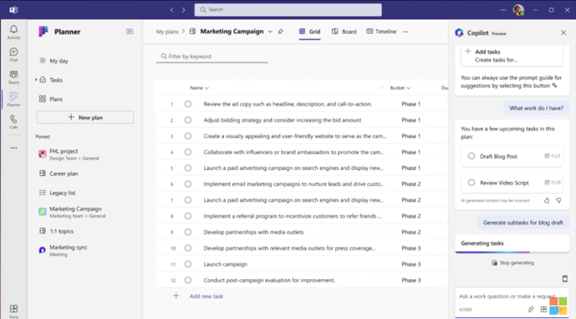In the digital age, data is the lifeblood of any business. It fuels decision-making, drives operations, and shapes strategic planning.
However, managing this data can be a daunting task. This is where software integrations for data entry come into play.
 by British Library (https://unsplash.com/@britishlibrary)
by British Library (https://unsplash.com/@britishlibrary)
These integrations streamline the data entry process, reducing the time and effort required. They also minimize the risk of human error, enhancing the accuracy of your data.
In this article, we will delve into the benefits of software integrations for data entry. We will explore how they can improve business efficiency, save costs, and facilitate better decision-making.
If you own a business, work in IT, or want to improve how data is entered, this article will help you.
Join us as we uncover the changing or having a big impact potential of software integrations for data entry.
Understanding Software Integrations and Data Entry
Software integrations refer to the process of connecting different software systems. This allows them to work together seamlessly, enhancing their overall functionality.
In the context of data entry, software integrations can be a game-changer. They automate the process of entering data into a system, eliminating the need for manual input.
This is particularly beneficial for businesses dealing with large volumes of data. Manual data entry can be time-consuming and prone to errors. Software integrations help to overcome these challenges.
They ensure that data is entered accurately and efficiently into the system. This not only saves time but also improves the quality of the data.
Moreover, software integrations for data entry can facilitate real-time data syncing. This means that data is updated across all systems as soon as it is entered, ensuring consistency.
Knowing how software integrations help with data entry is the first step to improving your business processes.
It opens the door to a world of possibilities for improving efficiency, accuracy, and decision-making.
The Impact of Automated Data Entry on Business Efficiency
Automated data entry, enabled by software integrations, has a profound impact on business efficiency. It streamlines the process of entering data into various systems, reducing the time and effort required.
 by Unseen Studio (https://unsplash.com/@uns__nstudio)
by Unseen Studio (https://unsplash.com/@uns__nstudio)
This automation eliminates the need for employees to manually enter data. As a result, they can focus on more strategic tasks that add value to the business.
Moreover, automated data entry reduces the risk of data duplication. This is because the same data does not need to be entered into different systems manually.
In addition, software integrations for data entry can facilitate real-time data synchronization. This ensures that all systems are updated simultaneously, enhancing data consistency across the business.
Overall, the impact of automated data entry on business efficiency is significant. It not only saves time and resources but also improves the quality and consistency of data.
Reducing Human Error and Increasing Accuracy
One of the key benefits of automated data entry is the reduction of human error. Manual data entry is prone to mistakes, which can lead to inaccurate data.
Software integrations for data entry help to overcome this challenge. They ensure that data is entered accurately into the system, reducing the risk of errors.
This is particularly important for businesses dealing with sensitive data. Any errors in such data can have serious consequences, including regulatory penalties and loss of customer trust.
Moreover, automated data entry ensures that data is entered consistently across all systems. This enhances the reliability of the data, making it a more valuable asset for the business.
In conclusion, reducing human error and increasing accuracy are key benefits of automated data entry. They contribute to the overall efficiency and effectiveness of business operations.
Cost Benefits of Data Entry Automation
Data entry automation, enabled by software integrations, also offers significant cost benefits. By reducing the time and effort required for data entry, it saves resources that can be used elsewhere.
For instance, employees who would otherwise be engaged in manual data entry can focus on more strategic tasks. This not only improves productivity but also contributes to the bottom line.
Moreover, automated data entry reduces the risk of costly errors. Any mistakes in data entry can lead to inaccurate data, which can have financial implications.
In addition, software integrations for data entry can be scaled up or down as needed. This means that businesses only pay for what they use, making it a cost-effective solution.
In conclusion, the cost benefits of data entry automation are significant. They contribute to the overall financial health and sustainability of the business.
Time Savings in Repetitive Data Entry Tasks
Another key benefit of automated data entry is the time savings in repetitive tasks. Manual data entry can be a time-consuming process, particularly for businesses dealing with large volumes of data.
Software integrations for data entry automate this process. They eliminate the need for employees to spend time on repetitive data entry tasks.
This not only saves time but also improves productivity. Employees can focus on more strategic tasks, contributing to the overall efficiency of the business.
Moreover, automated data entry ensures that data is entered into the system quickly. This is particularly beneficial in situations where timely data entry is critical.
In conclusion, the time savings in repetitive data entry tasks are a key benefit of automation. They contribute to the overall efficiency and productivity of the business.
Key Software Solutions for Data Entry Integration
There are numerous software solutions available for data entry integration. These solutions automate the process of entering data into various systems, enhancing efficiency and accuracy.
 by Chris Liverani (https://unsplash.com/@chrisliverani)
by Chris Liverani (https://unsplash.com/@chrisliverani)
Some of the key software solutions for data entry integration include:
- Data entry automation tools: These tools automate the process of entering data into various systems. They can be customized to meet the specific needs of the business.
- Integration platforms: These platforms facilitate the integration of various systems, enabling seamless data entry.
- API connectivity tools: These tools enable the integration of different systems through APIs, facilitating automated data entry.
Each of these solutions has its own strengths and weaknesses. Therefore, businesses need to carefully evaluate their needs before selecting a solution.
Moreover, it’s important to consider the scalability of the solution. As the business grows, the volume of data to be entered will also increase. Therefore, the chosen solution should be able to accommodate this growth.
In conclusion, there are various software solutions available for data entry integration. Businesses need to carefully evaluate their needs and select the most suitable solution.
The Role of API Connectivity
API connectivity plays a crucial role in software integrations for data entry. APIs, or Application Programming Interfaces, enable different software systems to communicate with each other.
This communication facilitates the seamless transfer of data between systems. As a result, data entered into one system can be automatically updated in all other connected systems.
In conclusion, API connectivity is a key enabler of automated data entry. It facilitates the seamless integration of different systems, enhancing efficiency and accuracy.
Real-Time Data Synchronization
Real-time data synchronization is another key benefit of software integrations for data entry. It ensures that data entered into one system is immediately updated in all other connected systems.
This not only enhances data consistency across the business but also improves decision-making. With real-time data synchronization, decision-makers have access to the most up-to-date data at all times.
In conclusion, real-time data synchronization is a key benefit of software integrations for data entry. It enhances data consistency and improves decision-making.
Advantages of Data Entry Automation for Decision-Making
Data entry automation offers several advantages for decision-making. One of the most significant is the availability of real-time data.
With automated data entry, data is updated in real-time across all systems. This means decision-makers always have access to the most current data.
Another advantage is the reduction in human error. Automated data entry reduces the chances of errors that can occur with manual data entry.
This leads to more accurate data, which in turn leads to better decisions. In conclusion, data entry automation significantly enhances decision-making by providing real-time, accurate data.
Improved Data Quality for Better Decisions
Improved data quality is a key benefit of data entry automation. With automation, the chances of human error are significantly reduced.
This leads to more accurate data. Accurate data is crucial for making informed decisions.
In conclusion, data entry automation improves data quality, leading to better decisions.
Facilitating Remote Work and Collaboration
Data entry automation also facilitates remote work and collaboration. With automated data entry, team members can access and update data from anywhere.
This makes it easier for remote teams to collaborate. It also ensures that everyone has access to the same, up-to-date data.
In conclusion, data entry automation facilitates remote work and collaboration by providing access to real-time data from anywhere.
Overcoming Challenges and Best Practices in Software Integration
Software integration for data entry can present challenges. These may include data security concerns and compatibility issues between different software.
However, these challenges can be overcome with careful planning and execution. It’s crucial to conduct thorough research before selecting software for integration.
Consider factors such as the software’s security features, compatibility with existing systems, and ease of use. It’s also important to provide adequate training to staff to ensure smooth adoption.
Regular maintenance and updates are also crucial to keep the integrated systems running smoothly. In conclusion, while challenges exist, they can be overcome with careful planning and best practices.
Selecting the Right Data Entry Integration Solutions
Selecting the right data entry integration solutions is crucial. The right solution should align with your business needs and goals.
It should also be compatible with your existing systems. Consider factors such as the software’s features, ease of use, and customer support.
In conclusion, choose data entry solutions carefully. Ensure they align with your business requirements.
Measuring ROI and Ensuring Scalability
Measuring the return on investment (ROI) of software integrations data entry is crucial. This can be done by comparing the cost of the software and its implementation with the benefits it brings.
Benefits may include time savings, increased accuracy, and improved decision-making. It’s also important to ensure that the software solution is scalable.
This means it can accommodate growth and changes in your business. In conclusion, measuring ROI and ensuring scalability are crucial when implementing data entry software integrations.
Conclusion: The Future of Data Entry with Software Integrations
The future of data entry lies in software integrations. As businesses continue to digitize their operations, the need for efficient and accurate data entry becomes more critical.
Software integrations for data entry offer numerous benefits. These include improved accuracy, time savings, and better decision-making. They also provide a competitive edge in today’s data-driven business environment.
In conclusion, software integrations for data entry are not just a trend, but a necessity. They are set to redefine the future of data entry, making it more efficient, accurate, and beneficial for businesses.



 by Unseen Studio (https://unsplash.com/@uns__nstudio)
by Unseen Studio (https://unsplash.com/@uns__nstudio) by Chris Liverani (https://unsplash.com/@chrisliverani)
by Chris Liverani (https://unsplash.com/@chrisliverani)










